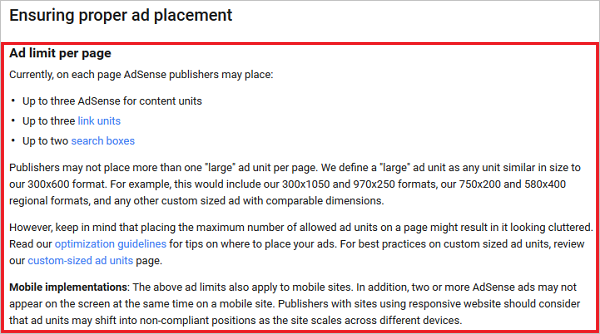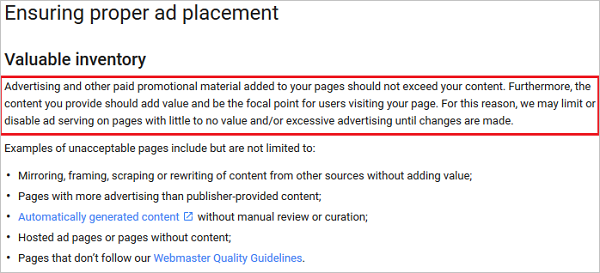Great news for Adsense publishers!!!
Google has made a policy change on “adsense ad limit per page”. Adsense has removed maximum ad units per page policy on Aug’16, now there is no restriction on the amount of ads placement per page.
Must See: What is Google Adsense and How Does it Works?
Old Adsense Ad Limit Policy vs. New Policy
If you are thinking about placing unlimited ads on your website or web page, first read the entire article to know the difference between old adsense ad placement policy and new adsense ad placement policy.
What is old Adsense Ad placement policy?
Following is the text excerpts of the old Adsense ad limit per page policy, which has been removed and new policy has been introduced on it’s place.
Ad limit per page
Currently, on each page AdSense publishers may place:
- Up to three AdSense for content units
- Up to three link units
- Up to two search boxes
Publishers may not place more than one “large” ad unit per page. We define a “large” ad unit as any unit similar in size to our 300×600 format. For example, this would include our 300×1050 and 970×250 formats, our 750×200 and 580×400 regional formats, and any other custom sized ad with comparable dimensions.
However, keep in mind that placing the maximum number of allowed ad units on a page might result in it looking cluttered. Read our optimization guidelines for tips on where to place your ads. For best practices on custom sized ad units, review our custom-sized ad units page.
Mobile implementations: The above ad limits also apply to mobile sites. In addition, two or more AdSense ads may not appear on the screen at the same time on a mobile site. Publishers with sites using responsive website should consider that ad units may shift into non-compliant positions as the site scales across different devices.

What is new Adsense Ad placement policy?
Following is the text excerpts of new Adsense Ad limit per page policy.
Advertising and other paid promotional material added to your pages should not exceed your content. Furthermore, the content you provide should add value and be the focal point for users visiting your page. For this reason, we may limit or disable ad serving on pages with little to no value and/or excessive advertising until changes are made.
Examples of unacceptable pages include but are not limited to:
- Mirroring, framing, scraping or rewriting of content from other sources without adding value;
- Pages with more advertising than publisher-provided content;
- Automatically generated content without manual review or curation;
- Hosted ad pages or pages without content;
- Pages that don’t follow our Webmaster Quality Guidelines.

What does it mean to You?
- Now you can place more than 3 ad units on a web page.
- You can place more than one large (> 300×600) ad unit on a web page.
- You are still allows only one 320×100 ad unit above the fold on mobile. There is no limit below the fold.
This new Adsense ad placement policy seems to be subjective evaluation of web content and its usefulness to readers. As there are no limits on ad placements so it doesn’t mean you can place more ads than your actual content.
To avoid “valuable inventory” policy violation, improve your readership by placing limited ads and good content on your website. This will not impact your adsense earnings. You can easily earn money online with Google Adsense by experimenting with different ads layout and A/B testing ad units.
